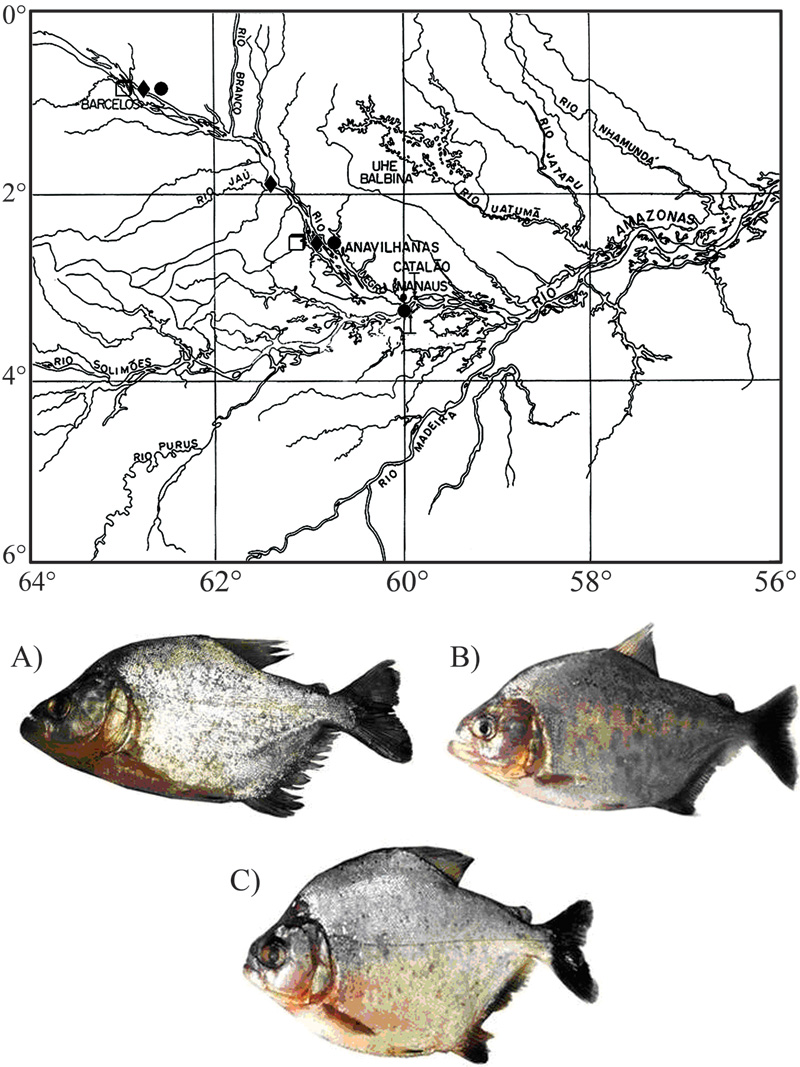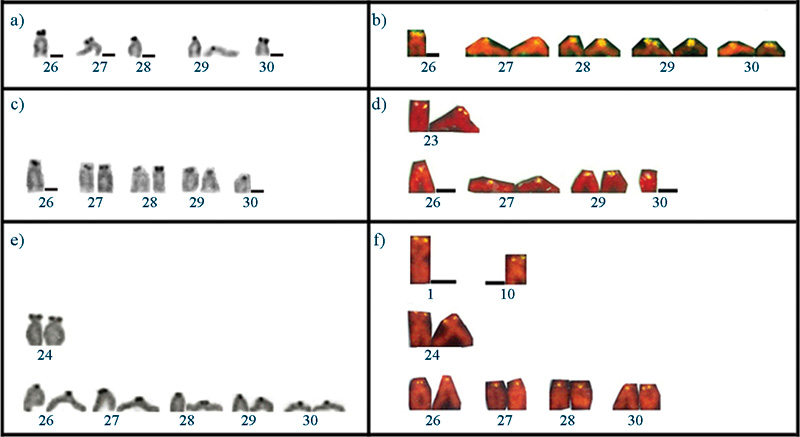Karyotypic characteristics of three species of the genus serrasalmus ( S. altispinnis , S. gouldingi and S. Serrulatus ) from the middle and lower Negro River, Amazon Basin, were investigated using different staining techniques and Fluorescent in situ hybridization with 5S and 18S rDNA probes. The diploid number was invariably 2n = 60 and the fundamental number was FN = 110. Nevertheless, the karyotypes differed from each other in composition: 24m, 20sm, 6st, 10a in S. altispinnis ; 22m, 22sm, 6st, 10a in S. gouldingi and 20m, 22sm, 8st, 10a in S. serrulatus. The karyotype of S. altispinnis differed from the one previously described in a population from the Pitinga River. C-positive constitutive heterochromatin was mainly pericentromeric in the karyotypes of all species. Nucleolar organizer regions were multiple and preferentially located terminally on the short arms of the subtelocentric/acrocentric chromosomes, as evidenced by both silver nitrate staining and fluorescent in situ hybridization with the 18S rDNA probe. The maximum number of NORs varied among species, as did the NOR-bearing chromosomes. FISH with the 5S rDNA probe produced an interstitial signal on the long arms of the pair 7 in all species, coincident with a C-positive heterochromatic band. While some chromosome features were shared by the three species, some were species-specific and thus useful for cytotaxonomy.
chromosome banding; cytotaxonomy of piranhas; FISH; karyotype; ribosomal DNA




